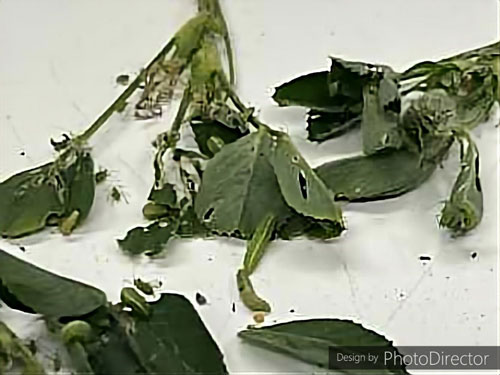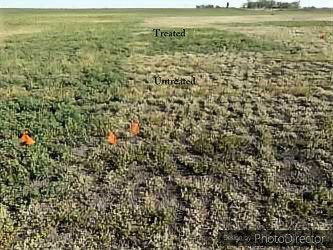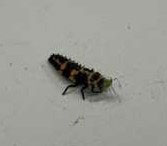Alfalfa weevils have been hatching throughout the eastern half of Kansas since at least March 20. The larvae have been voraciously feeding on the alfalfa foliage, which for the most part has been moisture-stressed, thus exacerbating the feeding damage. Even after last weekend’s rain most of the alfalfa sampled through April 18 had only 2-4-inch stems. Most untreated fields were 100% infested with alfalfa weevils. However, one positive is that about 70% of the weevils sampled were in their final larval instar (Figure 1). Thus, most should be pupating within the week, so their voracious feeding is about finished. Insecticide applications for alfalfa weevils started in the first week of April and seemed to have helped protect some of the foliage (Figure 2).

Figure 1: Alfalfa weevil larvae. Photo by Amie Norton, K-State Research and Extension.

Figure 2: Alfalfa weevil insecticide trial. Treatment was applied on April 6 (top center of photo) versus the untreated plot (center of photo). Photo from Department of Entomology, K-State Research and Extension.
Pea aphids are increasing throughout north central Kansas. However, the surviving beneficials are helping to control most of these aphids (Figure 3).

Figure 3: Lady beetle larva consuming pea aphid. Photo by Amie Norton, K-State Research and Extension.
Jeff Whitworth, Extension Entomology Specialist
jwhitwor@ksu.edu